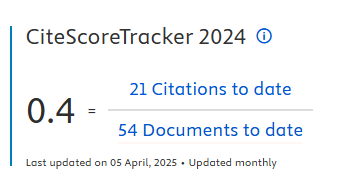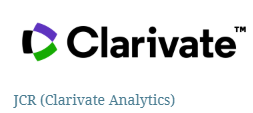Diffusion of participatory budgets in Poland: do neighbours matter?
DOI:
https://doi.org/10.5585/iji.v10i4.21876Keywords:
Participatory budget, Diffusion, Peer effects, Spatial proximity, Poland.Abstract
Objective of the study: The subject of the study are participatory budgets – social innovations used by local municipalities to involve citizens in local budgetary decisions with roots in Brazil. The main objective was to determine how being part of a social network affects the decision to introduce participatory budgets made by municipalities in Poland, where a remarkable spread of the innovation has been observed since the early 2010s.
Methodology: Spatial autocorrelation tests and visualizations were used to uncover clusters of communes with most similar or dissimilar characteristics.
Originality/Relevance: Novelty of the study approach lies in the utilization of an own database – with the intention to overcome the problem of data insufficiency, typical of related research.
Main results: The presence of spatial proximity-based peer effects was confirmed in the study. The concentration of innovators has remained spatially uneven, which is to be linked to e.g. the cross-regionally diverse forms of social capital. The data-based study design allows to explore participatory budgets as products of social networks and not only individual strategies, as evidenced by numerous case studies in the field.
Methodological contributions: The study demonstrates the relevance of collecting longitudinal data for the development of research on participatory budgets.
Social/management contributions: Insights from the study are of practical value for recent and future. adopters, wishing to understand the broader relevance of their policies, as well as for higher level policy-makers trying to better adapt their legal frameworks to the current and future waves of innovators.
Downloads
References
Abreu, M., de Groot, H. & Florax, R. (2004). Space and Groth: a Survey of Empirical Evidence and Methods. Tinbergen Institute Working Paper No. TI 04-129/3. https://dx.doi.org/10.2139/ssrn.631007
Akinyemi, O., Harris, B., & Kawonga, M. (2019). Innovation diffusion: how homogenous networks influence the uptake of community-based injectable contraceptives. BMC Public Health, 19: 1-12. https://doi.org/10.1186/s12889-019-7819-5
Aksiuto, K. (2019). Social capital: Limitations of the concept and participation in public life in Poland. Bratislava Law Review, 3(1): 58-68.
Anselin, L., Ibnu, S. & Youngihn, K. (2006). An Introduction to Spatial Data Analysis. Geographical Analysis, 38(1): 5-22. https://doi.org/10.1111/j.0016-7363.2005.00671.x
Anselin, L., Syabri, I. & Smirnov, O. (2002). Visualizing Multivariate Spatial Correlation with Dynamically Linked Windows. University of California, Center for Spatially Integrated Social Science (CSISS). Retrieved from http://iscsi.spatial.ucsb.edu/events/meetings/spatial-tools/proceedings/papers/anselin.pdf
Avritzer, L. & Vaz, N. (2014). The emergence of the participatory budget and its expansion in Brazil: analysing the potential and limitations. In Dias, N. (ed.), Hope for democracy: 25 years of participatory budgeting worldwide, pp. 165-175, São de Alportel: Epopeia Records/Oficina.
Bardovič, J. & Gašparík, J. (2021). Enablers of participatory budgeting in Slovakia during the COVID-19 pandemic. Scientific Papers of the University of Pardubice, Series D: Faculty of Economics and Administration, 29(1): 1-12. http://doi.org/10.46585/sp29011248
Bednarska-Olejniczak, D., & Olejniczak, J. (2018). Participatory Budgeting in Poland in 2013-2018 – Six Years of Experiences and Directions of Changes. In Dias, N. (ed.), Hope for Democracy: 30 years of Participatory Budgeting Worldwide (pp. 337-354). São de Alportel: Epopeia Records/Oficina.
Berlin Institut für Partizipation (2020). Bügerbudgets in Deutschland. Formen, Bedeutung und Potenziale zur Förderung politischer Teilhabe und bürgerschaftlichem Engagements. Berlin.
Bernaciak, A. & Kopczyński, F. (2019). Participatory budgeting - an indicator of social activity of residents and a tool for environmental protection in Poland: spatial diversity in East/West configuration. Ekonomia i środowisko, 2(69): 8-22. http://doi.org/10.34659/2019/2/18
Beuermann, D. W., & Amelina, M. (2018). Does participatory budgeting improve decentralized public service delivery? Experimental evidence from rural Russia. Economics of Governance, 19: 339-379. http://doi.org/10.1007/s10101-018-0214-3
Boc, E. (2019). The Development of Participatory Budgeting Processes in Cluj-Napoca. Transylvanian Review of Administrative Sciences, 58E: 38-51. http://doi.org/10.24193/tras.58E.3
Bollinger, B., & Gillingham, K. (2012). Peer Effects in the Diffusion of Solar Photovoltaic Panels. Marketing Science, 31(6): 900-912. https://doi.org/10.1287/mksc.1120.0727
Bräutigam D. (2004). The People's Budget? Politics, Participation and Pro-poor Policy. Development Policy Review, 22(6), pp. 653-668. https://doi.org/10.1111/j.1467-7679.2004.00270.x
Brzeziński, K. (2016). Między biernością a aktywnością obywatelską w kontekście łódzkiego budżetu obywatelskiego. Studia Miejskie, 21: 167-181.
BudzetAlert, PB databank. Available at: budzetalert.pl [03.12.2020, not accessible anymore].
Cabannes, Y., & Ming, Z. (2013). Participatory budgeting at scale and bridging the rural-urban divide in Chengdu. Environemnt and Urbanzation, 26(1): 257-175. https://doi.org/10.1177/0956247813509146
Cao, H., & Folan, P. (2012). Product life cycle: the evolution of a paradigm and literature review from 1950-2009. Production Planning & Control, 23(8): 641-662. https://doi.org/10.1080/09537287.2011.577460
Claridge, C. (2018). Functions of social capital – bonding, bridging, linking. Social Capital Research. Retrieved from: https://d1fs2th61pidml.cloudfront.net/wp-content/uploads/2018/11/Functions-of-Social-Capital.pdf?x91095
Dedehayir, O., Ortt, R., Riverola, C. & Miralles, F. (2017). Innovators and early adopters in the diffusion of innovations: a literature review. International Journal of Innovation Management, 21(8): 1-27. https://doi.org/10.1142/S1363919617400102
Dias, S., Enríquez, S., & Júlio, S. (2019). The Participatory Budgeting World Atlas 2019. Vila Ruiva/Faro: Epopeia Records/Oficina.
Ganuza, E., & Baiocchi, G. (2012). The Power of Ambiguity: How Participatory Budgeting Travels the Globe. Journal of Public Deliberation, 8(2): 1-12. https://doi.org/10.16997/jdd.142
Gawłowski, R., & Popławski, M. (2019). Regionalne budżety obywatelskie – powielenie, inspiracja czy nowa konstrukcja? Samorząd Terytorialny, 1-2: 128-139.
Glick, H., & Hays, S. (1991). Innovation and Reinvention in State Policymaking: Theory and the Evolution of Living Will Laws. The Journal of Politics, 53(3): 835-850. https://doi.org/10.2307/2131581
Griffith, D. A. (1996). Some Guidelines for Specifying the Geographic Weights Matrix Contained in Spatial Statistical Models 1. In Arlinghaus, S.L. & Griffith, D. A. & Arlinghaus, W. C. & Drake, W. D. & Nystuen, J. D. (ed.) Spatial Statistical Models 1: Practical Handbook of Spatial Statistical Models 1, London/New York: CRC Press.
Hansen, E. R., Jansa, J. M. & Gray, V. H. (2019). Copy and Paste Lawmaking: Legislative Professionalism and Policy Reinvention in the States. American Politics Research, 47(4): 739-769. http://dx.doi.org/10.1177/1532673X18776628
Head Office of Land Surveying and Cartography. Geoportal for Spatial Infrastructure-related Information. Available at: https://www.geoportal.gov.pl/
Herzberg, C. (2018). Bürgerbudgets zur Stärkung einer lebendigen ländlichen Gesellschaft ? Neue Ansätze für die Dorf- und Regionalentwicklung. Ländlicher Raum, 3: 16-18.
Institute for Innovative Though Foundation (Fundacja Instytut Myśli Innowacyjnej), PB databank. Available at: budzetyobywatelskie.pl.
Janc, K. (2006). Zjawisko autokorelacji przestrzennej na przykładzie statystyki I Morana oraz lokalnych wskaźników zależności przestrzennej (LISA) - wybrane zagadnienia metodyczne. Warsaw: IGiPZ Pan.
Kębłowski, W., & von Criekingenb, M. (2014). Participatory budgeting Polish-style. What kind of policy practice has travelled to Sopot, Poland. In Dias, N. (ed.), Hope for democracy: 25 years of participatory budgeting worldwide, pp. 369-377, São de Aloportel: Epopeia Records/Oficina.
Kiesling, E., Günther, M., Stummer, C., & Wakolbinger, L. (2012). Agent-based simulation of innovation diffusion: A review. Central European Journal of Operations Research, 20(2): 183-230.
Kociuba, D., & Rabczewska, K. (2019). Rola budżetów partycypacyjnych w zagospodarowaniu przestrzeni publicznych polskich miast - studium przypadku Lublina. Studia Regionalne i Lokalne, 76(2): 82-109. http://doi.org/10.7366/1509499527605
Krenjova, J., & Raudla, R. (2018). Policy Diffusion at the Local Level: Participatory Budgeting in Estonia. Urban Affairs Review, 54(2): 419-447. http://doi.org/10.1177/1078087416688961
Laskowska, E. (2017). Budżet partycypacyjny i jego rola na przykładzie miasta stołecznego Warszawy. Polityki Europejskie, Finanse i Marketing, 18(67): 73-85. http://doi.org/10.22630/PEFIM.2017.18.67.24
Lee, J., & Kim, S. (2018). Citizens’ e-participation on agenda setting in local governance: Do individual social capital and e-participation management matter? Public Management Review, 20(6): 873-895. https://doi.org/10.1080/14719037.2017.1340507
Leśniewska-Napierała, K. (2019). Participatory budgeting as a new instrument of social participation in Poland’s rural areas. Studia Obszarów Wiejskich, 53: 77-93. http://doi.org/10.7163/SOW.53.6
Leśniewska-Napierała, T. & Napierała, K. (2020). Participatory budgeting: Creator or creation of a better place? Evidence from rural Poland. Bulletin of Geography. Socio-economic Series, 48: 65-81. http://doi.org/10.2478/bog-2020-0014
Mallinson, D. (2020). Policy Innovation Adoption Across the Diffusion Life Course. Policy Studies Journal, 0(0): 1-24. https://doi.org/10.1111/psj.12406
Marques, P., Morgan, K. & Richardson, R. (2018). Social innovation in question: The theoretical and practical implications of a contested concept. Environment and Planning C: Politics and Space, 36(3): 496-512. https://doi.org/10.1177%2F2399654417717986
Martela, B., Bubak, K. & Janik, L. (2021). Barometr budżetu obywatelskiego. Edycja 2020. Warszawa/Kraków: Instytut Rozwoju Miast i Regionów.
Miejski kodeks dialogu (2016). Gorzów Wielkopolski: Biuro Konsultacji Społecznych i Rewitalizacji. Retrieved from https://partycypacjaobywatelska.pl/konsultacje/wp-content/uploads/sites/4/2016/05/GORZOW_internet.pdf
Novy, A., & Leubolt, B. (2005). Participatory Budgeting in Porto Alegre: Social Innovation and the Dialectical Relationship of State and Civil Society. Urban Studies, 42(11): 2023-2036. https://doi.org/10.1080%2F00420980500279828
Pietrzykowski, R. W. (2011). Wykorzystanie metod statystycznej analizy przestrzennej w badaniach ekonomicznych. Roczniki Ekonomiczne Kujawsko-Pomorskiej Szkoły Wyższej w Bydgoszczy, 4: 97-112.
Piłat-Borcuch, M., & Borcuch, A. (2018). Budżet partycypacyjny miasta Kielce. Miasto przyszłości, Laboratorium Wiedzy Artur Borcuch, 1-2: 85-95.
Podgórska-Rykała, J. (2019). Budżet obywatelski a budżet partycypacyjny. Dwa rozwiązania dla jednego miasta w konsekwencji nowelizacji prawa samorządowego. Roczniki Administracji i Prawa, XIX: 221-236.
Polko, A. (2015). Models of participatory budgeting – the case study of Polish city. Journal of Economics and Management, 19(1): 34-44.
Ptak, A. (2015). Local communities in the process of creating a village council fund. Studia Regionalne i Lokalne, 59(1): 138-153. http://doi.org/10.7366/1509499515907
Putnam, R. (1995). Bowling Alone: America's Declining Social Capital. Journal of Democracy, 6(1): 65-78. https://doi.org/10.1353/jod.1995.0002
QGIS Development Team (2009). QGIS Geographic Information System. Open Source Geospatial Foundation. Available at: http://qgis.org
Rogers, E. (2003). Diffusion of Innovations. New York: The Free Press.
Schneider, S. & Busse, S. (2015). Participatory Budgeting in Germany – Towards a More Systematic , Longitudinal Analysis. Paper presented at the ECPR General Conference, 26-29 August 2015, Université de Montréal, Spain.
Sedmihradská, L., Kukučková, S. & Bakoš, E. (2022). Project-oriented participatory budgeting in the Czech Republic. In De Vries, M. N. (ed.), International Trends in Participatory Budgeting. London: Palgrave Macmillan.
Sintomer, Y., Herzberg, C., Röcke, A. (2008). Participatory budgeting in Europe: Potentials and challenges. International Journal of Urban and Regional Research, 32(1): 164-178. https://doi.org/10.1111/j.1468-2427.2008.00777.x.
Sintomer, Y., Herzberg, C., Röcke, A., & Allegretti, G. (2012). Transnational Models of Citizen Participation: The Case of Participatory Budgeting. Journal of Public Deliberation, 8(2): 1-32. https://doi.org/10.16997/jdd.141
Spada, P. (2014). The Diffusion of Participatory Governance Innovations: A Panel Data Analysis of the Adoption and Survival of Participatory Budgeting in Brazil. American Studies Association, 32: 1-53.
Spada, P. (2017). Dataset on Brazilian Participatory Budgeting: 1989-2012. Retrieved from https://dataverse.harvard.edu/dataset.xhtml?persistentId=doi:10.7910/DVN/EDSNJS
Stocznia Foundation (Fundacja Stocznia). PB comparison tool. Available at: https://bp.partycypacjaobywatelska.pl/porownywarka-budzetow/
Stocznia Foundation (2021). Wpływ pandemii na budżet obywatelski w 2020 roku. Wyniki badania ankietowego. Retrieved from https://bp.partycypacjaobywatelska.pl/wp-content/uploads/2022/01/raport_26.01_FINAL-1.pdf
Stokłuska, E. (2015). Opis przykładu partycypacji. Budżet obywatelski w Sopocie. Pracownia Badań i Innowacji Społecznych „Stocznia”. Retrieved from https://partycypacjaobywatelska.pl/wp-content/uploads/2015-/09/praktyka_budzet_obywatelski_sopot.pdf
Supreme Audit Office (2019). Funkcjonowanie budżetów partycypacyjnych (obywatelskich) Gdańsk: Regional Office in Gdańsk.
Swianiewicz, P., Herbst, J., Lackowska, M., & Mielczarek, A. (2008). Szafarze darów europejskich. Kapitał społeczny a realizacja polityki regionalnej w polskich województwach. Warszawa: Wydawnictwo Naukowe Scholar.
Sześciło, D. (2015). Participatory budget in Poland: Quasi-Referendum Instead of Deliberation. Hrvatska i komparativna javna uprava: časopis za teoriju i praksu javne uprave, 15(2): 373-388.
Szreter, S., Woolcock, M. (2004). Health by association? Social capital, social theory, and the political economy of public health. International Journal of Epidemiology, 33(4): 650–67. http://doi.org/10.1093/ije/dyh013
Tobiasz-Adamczyk, B., & Zawisza, K. (2017). Urban-rural differences in social capital in relation to self-rated health and subjective well-being in older residents of six regions in Poland. Annals of Agricultural and Environmental Medicine, 24(2): 162-170. https://doi.org/10.26444/aaem/74719
Valente, T. W. (2005). Network Models and Methods for Studying the Diffusion of Innovations. In Carington, P. J. (ed.) Models and Methods in Social Network Analysis, pp. 98-116, Cambridge: Cambridge University Press.
Wiśniewska, M. (2018). Budżet obywatelski w polskich miastach - doświadczenia w województwie łódzkim. Studia miejskie, 29: 91-99. http://doi.org/10.25167/sm2018.029.06
Xiong, H., Payne, D. & Kinsella, S. (2016). Peer effects in the diffusion of innovations: Theory and simulation. Journal of Behavioral and Experimental Economics, 63: 1-13. https://doi.org/10.1016/j.socec.2016.04.017
Young, H. (2009). Innovation diffusion in heterogeneous populations: Contagion, social influence, and social learning. American Economic Review, 99(5): 1899-1924. http://doi.org/10.1257/aer.99.5.1899
Zolotov-Naranjo, M., Olveira, T., Cruz-Jesus, F., Martins, J., Gonçalves, R., Branco, F. & Xavier, N. (2019). Examining social capital and individual motivators to explain the adoption of online citizen participation. Future Generation Computer Systems, 92: 302-311. https://doi.org/10.1016/j.future.2018.09.044
Downloads
Published
How to Cite
Issue
Section
License
Copyright (c) 2022 Piotr Wetoszka

This work is licensed under a Creative Commons Attribution-NonCommercial-ShareAlike 4.0 International License.
- Abstract 959
- PDF 452











